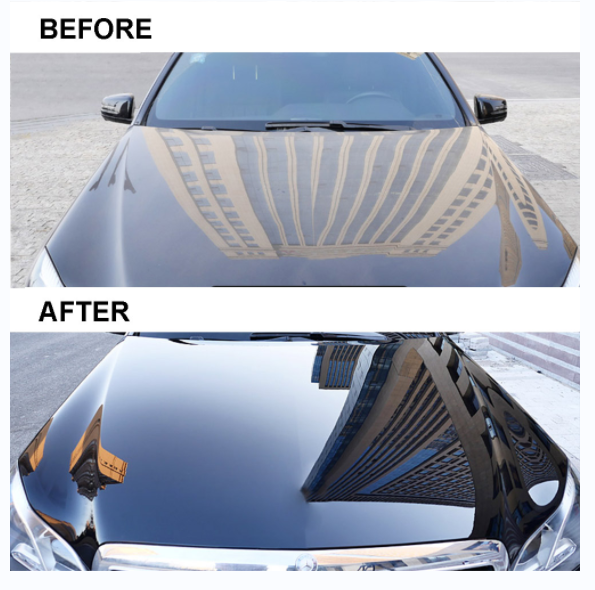Get certified paint protection film installation to prevent rock chips and scratches.
A Comprehensive Guide to the Kinds of Ceramic Covering on the marketplace
Ceramic finishes have actually arised as an essential remedy throughout different industries due to their special buildings and applications. As we check out the unique features and applications of these finishes, the effects for performance and durability become increasingly noticeable, elevating inquiries regarding which type could ideal suit your demands.
Comprehending Ceramic Coatings
Ceramic coatings are sophisticated safety services that have gained popularity in numerous markets, especially in automobile and aerospace applications. These finishings are composed of a fluid polymer that, when treated, forms a durable, hydrophobic layer on the surface area of the substrate. This layer offers enhanced resistance to environmental contaminants, UV radiation, and chemical direct exposure, therefore extending the life and aesthetic appeal of the underlying product.
The essential component of ceramic layers is silica, which contributes to their solidity and resilience. The application process typically includes surface area prep work, application of the coating, and curing, which can be achieved through warm or UV light. As soon as cured, ceramic coatings show remarkable bonding residential properties, allowing them to stick highly to a range of surface areas, including steels, plastics, and glass.
In enhancement to their protective features, ceramic layers also use ease of upkeep. Their hydrophobic nature lowers the adherence of dirt and gunk, making cleansing easier and much less constant. Generally, the fostering of ceramic layers stands for a considerable innovation in surface protection innovation, offering both practical and aesthetic advantages throughout multiple sectors.
Kinds Of Ceramic Coatings
Different sorts of ceramic coverings are readily available, each made to satisfy certain performance needs and applications - scratch repair sarasota. The most typical types consist of:
Silica-based Coatings: These coverings mostly include silicon dioxide and are known for their longevity and chemical resistance. They are extensively utilized in vehicle and commercial applications.
Titanium Dioxide Coatings: Prominent for their photocatalytic residential properties, titanium dioxide layers are frequently used in environments where self-cleaning and antifungal homes are desirable, such as in structure products and auto coatings.
Zirconia Coatings: Defined by their high-temperature security and thermal resistance, zirconia layers are utilized in applications such as turbine engines and high-performance auto parts.
Alumina Coatings: Exhibiting excellent firmness and thermal security, alumina layers are frequently used in wear-resistant applications, including reducing tools and commercial machinery. - ceramic coating sarasota
Hybrid Coatings: Integrating the residential or commercial properties of numerous products, hybrid finishings provide enhanced efficiency qualities, making them appropriate for distinct and demanding applications.
Each kind of ceramic coating offers distinctive objectives, enabling individuals to choose the most proper option based upon specific environmental conditions and efficiency demands.
Advantages of Ceramic Coatings
Ceramic coverings, in particular, deal various advantages that make them increasingly popular among manufacturers and consumers alike. These finishes are immune to scratches, chemicals, and UV rays, ensuring that the underlying surface remains protected over time.
Along with durability, ceramic finishings provide excellent hydrophobic homes, enabling easy cleaning and upkeep. This water-repellent nature lessens the adherence of dirt, gunk, and other impurities, which can extend the aesthetic appeal and functionality of the surface. Ceramic coatings can considerably enhance thermal resistance, making them ideal for applications that withstand high temperature levels.

Application Process
When applying ceramic coatings, a thorough method is vital to achieve optimum results. The application procedure normally begins with comprehensive surface area preparation. This includes washing, decontaminating, and polishing the surface area to remove all pollutants, including dust, oil, and prior waxes or sealers. A clean surface area guarantees correct adhesion of the finishing.
Once the surface is prepped, the following action is to use the ceramic finish. This can be done using an applicator pad or a microfiber fabric, making certain even coverage. It is vital to operate in little areas to keep control and prevent premature treating. The coating ought to be used in slim layers, as thicker applications can lead to irregular coatings.
After application, the layer calls for a particular curing time, normally varying from a couple of hours to a full day, depending on the product. Throughout this time, it is important to avoid direct exposure to wetness or pollutants. A mild buffing might be needed after treating to enhance the gloss and eliminate any high spots. Following these actions carefully will make best use of the performance and long life of the ceramic layer, supplying a long lasting safety layer for the surface area.
Upkeep and Longevity
To make certain the longevity and efficiency of a ceramic coating, regular maintenance is see post vital. Ceramic coverings, understood for their durability and protective high qualities, call for specific treatment routines to maximize their life expectancy and efficiency.
In enhancement to normal washing, periodic assessments are crucial. Try to find indications of wear or damages, such as hydrophobic buildings diminishing or surface imperfections. If necessary, a light gloss may be put on invigorate the layer without removing it away.
Moreover, the application of a booster spray can enhance the covering's hydrophobic effects and restore its gloss. This is particularly useful for finishes that have remained in usage for an extensive duration. Inevitably, by adhering to these maintenance techniques, one can considerably extend the life go of a ceramic finishing, making sure that it proceeds to give optimum security against environmental variables and maintain the visual allure of the automobile.
Final thought
